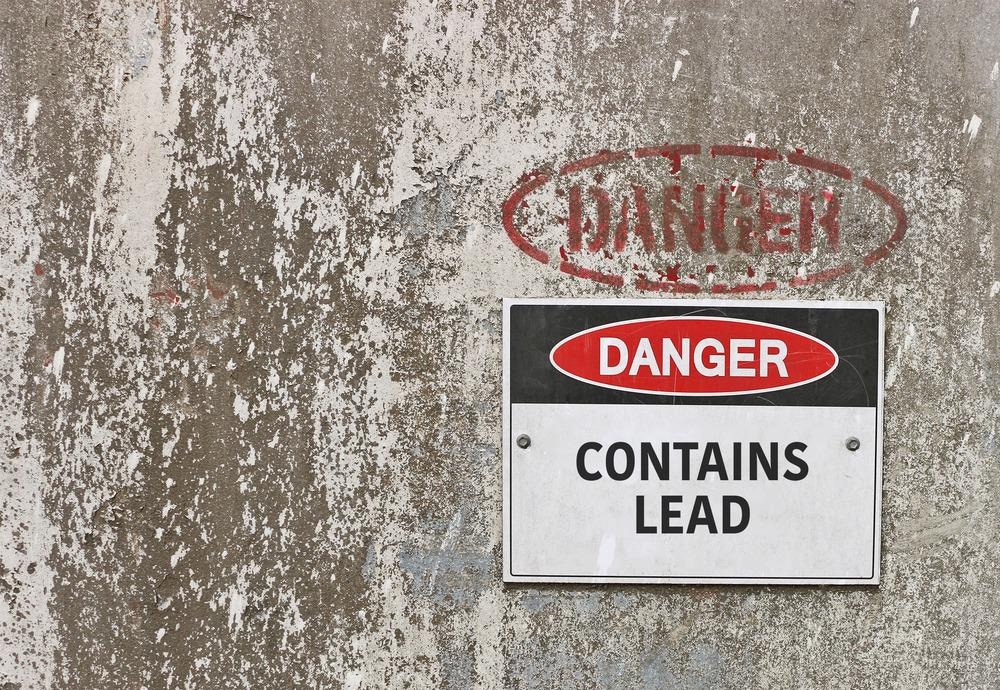The presence of lead [Pb(II)], even at low concentration, has detrimental effects on the biological systems. Hence their removal from water sources is critical. In an article recently published in the journal Scientific Reports, the authors prepared a novel nanocomposite-based adsorbent, nano-magnesium oxide (nMgO)/bentonite, using a sol-gel method and tested its ability to remove Pb(II) from aqueous solutions.

Study: Novel metal based nanocomposite for rapid and efficient removal of lead from contaminated wastewater sorption kinetics, thermodynamics and mechanisms. Image Credit: Kim Britten/Shutterstock.com
Removal of Heavy Metals from Water
Industrial activities involving heavy metals are impacting environmental systems and transferred to the food chain causing detrimental effects on human health. Pb(II) is highly toxic to biological systems at low concentrations. Thus, eliminating this contaminant from water bodies and wastewater is critical.
Although techniques including coagulation, ion exchange, electrolysis, membrane filtration, and flotation were applied to remove Pb(II), most of these techniques are expensive and are inefficient for heavy metal removal at lower concentrations.
Due to the presence of various adsorption sites for heavy metals, bentonite clay is a widely used adsorbent to eliminate contaminants from water. Moreover, bentonite clay adsorption is an eco-friendly and cost-effective approach to the adsorption of heavy metals. However, in its natural state, this clay has a low capacity for adsorption. Hence their surface modification is necessary. To this end, nanomaterials with a large surface area to volume ratio are used in water treatment.
Application of Novel nMgO/Bentonite Nanocomposite as Pb(II) Adsorbent
Metal-oxide-based nanomaterials like nMgO are an efficient adsorbent of toxic metals. In the present work, bentonite clay was modified by surface coating it with nMgO, and the authors hypothesized that this modification enhances the adsorption capacity of bentonite clay for Pb(II) ions in contaminated water.
The prepared novel nMgO/bentonite nanocomposite was characterized using scanning electron microscopy with energy dispersive X-ray analysis (SEM–EDX), X-ray diffraction (XRD), and Fourier transforms infrared (FTIR) analysis.
The authors also determined Pb(II) adsorption capacity under optimal conditions of pH, competitive cations, adsorbent dose, temperature, and contact time. The recycling prospect of the prepared novel nanocomposite was also examined.
Research Findings
SEM studies of the bentonite sample revealed that its particle size was less than 100 nanometers. EDX analysis revealed that oxygen (O), sodium (Na), magnesium (Mg), aluminum (Al), silicon (Si), and iron (Fe) are the main elements of bentonite. Results obtained from XRD revealed that the main contents of bentonite are silicon oxide, sodium iron oxide, titanium oxide, quartz, potassium iodate, and calcium iron oxide.
The novel nMgO/bentonite nanocomposite analyzed by SEM and EDX showed highly apparent bentonite chips with MgO nanoparticles (NPs) scattered on the surface of bentonite in SEM images. The nMgO incorporation into bentonite grew the specific area to 15.195 square meters per gram for nanocomposites. Moreover, the results from the nanocomposite sample’s EDX analysis revealed the main elements of the sample O, Mg, Al, Si, and Fe.
The Pd-laden nanocomposites analyzed using SEM and EDX revealed that the cation (Si, Al, K, and Fe) levels on nanocomposites decreased due to Pb adsorption. The results from the XRD analysis of nanocomposites showed an enhanced amount of silicate, calcium iron oxide, potassium aluminum, calcium aluminum oxide, and tridymite.
The plausible Pb(II) adsorption phenomenon explored from FTIR results revealed that before Pb(II) adsorption, the FTIR spectrum of bentonite showed two peaks at 3697 and 3622 centimeter inverse corresponding to hydroxyl (OH) group stretching vibrations coordinating with two Al atoms.
Other peaks at 1639 centimeter inverse correspond to C=C stretching of alkene, peaks at 1488 and 1033 centimeter inverse correspond to Si-O vibration mode, and bands at 914, 534, and 468 centimeter inverse correspond to SiO4 tetrahedron.
The FTIR spectrum of bentonite loaded with Pb showed the disappearance of peak at the 3426 centimeter inverse. The interaction between Pb(II) ions and bentonite increased peak intensity at the 1032 centimeter inverse and a band shift at the 913 centimeter inverse. Moreover, bands at 534 and 468 centimeter inverse showed a small shift and an increased intensity due to the addition of Pb(II) ions. The intensity changes and shifts reveal the role of Si–O and OH groups in Pb(II) adsorption by bentonite.
Since the intensity of OH groups in FTIR increased after adsorption of Pb(II) ions on nMgO, the authors inferred that Pb(II) precipitated with OH groups. Moreover, the bands appeared at 877 and 684 centimeter inverse that carbonate has a role in Pb(II) precipitation.
EDX analysis showed the exclusion of the cation exchange reaction between Mg of nMgO and Pb(II) as Mg percent increased in Pb(II) saturated nanocomposite. The authors also hypothesized that nMgO possibly attracts protons (H+) from aqueous solution and forms OH groups, followed by Pb(II) exchange reaction that corroborates the increase in pH from 4 to 9.
Conclusion
To summarize, the authors synthesized and utilized a novel nMgO/bentonite nanocomposite as an adsorbent for Pb(II) removal from wastewater. The adsorbent removed 94% of Pb(II) at 298 kelvin in five minutes, suggesting a rapid adsorption reaction. The novel nanocomposite synthesized had 4.5-fold enhanced adsorption over bentonite.
Reference
Elkhatib, E.A., Moharem, M.L., Saad, A.F. et al. Novel metal-based nanocomposite for rapid and efficient removal of lead from contaminated wastewater sorption kinetics, thermodynamics, and mechanisms. Scientific Reports 12, 8412 (2022). https://www.nature.com/articles/s41598-022-12485-x
Disclaimer: The views expressed here are those of the author expressed in their private capacity and do not necessarily represent the views of AZoM.com Limited T/A AZoNetwork the owner and operator of this website. This disclaimer forms part of the Terms and conditions of use of this website.